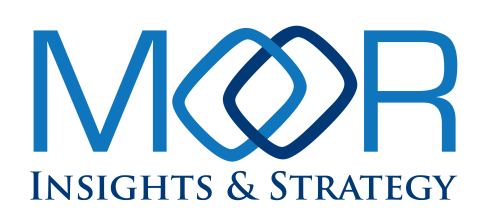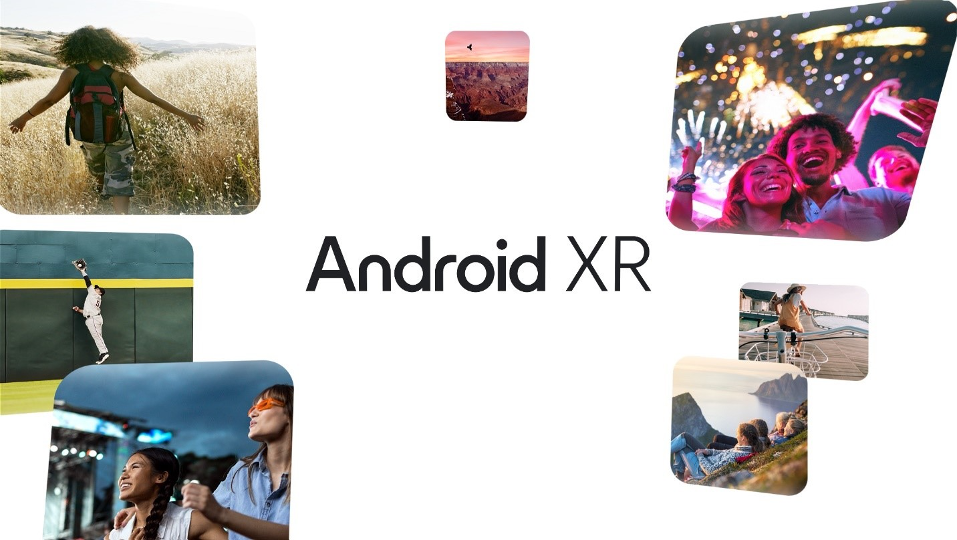
Welcome to this edition of our Weekly Analyst Insights roundup, which features the key insights our analysts have developed based on the past week’s events.
Last week Time Magazine published its big “CEO of the Year” feature about Lisa Su of AMD. I was quoted in the article, which I recommend to you as a good refresher about the state of play in the chip market today—and how far AMD has come in the decade since Su became CEO. To me it’s one more reminder of the accelerated pace of change in the tech industry, with generative AI only adding more fuel to the fire. For more on my own views of Su and AMD, take a look at my deep dive on Forbes from last month.

This week I also want to shine a spotlight on the analysis of the brand-new Android XR spatial computing OS written by our own Anshel Sag. Anshel’s been covering the world of spatial computing and XR for more than a decade, and for my money he’s as good as any analyst in the world in this area. Google must think so, too, because he was one of only two analysts invited to preview Android XR. His analysis was published on Forbes last Thursday, a few minutes after Google officially announced the OS.
If you have a CEO we should be talking with or a big new launch you think we ought to know about, please don’t hesitate to let us know.
The holidays are coming soon, but we’re still not quite ready for a break from conference season. Jason, Mel, Robert, and I will attend the Salesforce Agentforce 2.0 virtual event this week. We’re all wrapping up research and advisory sessions and will enjoy a quick respite with our families before CES in January.
Last week, I was in Northern California for the Lattice Developer Conference and then Marvell’s Industry Analyst Day, where Matt joined me. Robert and Jason were in Boston with IBM, and Anshel attended T-Mobile’s Analyst Summit. Will was in New York at HP’s Security Analyst Summit. Mel, Jason, and Robert tuned into the ServiceNow Global Industry Analyst Digital Summit.
Read more about significant tech trends and events in this week’s Analyst Insights.
Have a great week,
Patrick Moorhead
———
Our MI&S team published 20 deliverables:
Over the past week, MI&S analysts have been quoted in multiple syndicated top-tier international publications, including Time, PC World, Tom’s Hardware, Benzinga, and UC Today. The media wanted our takes on AMD, Arm, AWS, and Intel. Mel made an appearance on RingCentral’s State of AI in Business Communications webinar, and her UC musings were listed in UC Today’s Top 10 Predictions for 2025.
MI&S Quick Insights
Google has just announced Agentspace, which is a no-code-ish environment geared towards personal work productivity. Many of Google’s competitors are also playing in this market, so it’s no surprise Google is getting into it. Each of the major cloud vendors has both an AI development platform (in Google’s case Vertex AI) and associated tools for different personas. Google’s foray into power users is quite interesting in that it leverages both Vertex AI and the viral NotebookLM project. That said, it’s different from many of the other agentic approaches out there. In some ways it may be ahead of its time. Stay tuned for more on this topic soon.
Last week I got to spend some time with Matt Gierhart, who leads the custom app dev practice at IBM Consulting. While we spoke a bit about tools and AI assistants we both like, we then shifted focus to IBM Garage, which is a collaboration space for delivering projects with IBM clients. What stood out most was how IBM can quickly present multiple scenarios for a customer decision-making process—“Why should we do one feature versus another?,” for example. Developing these scenarios often takes time and data, but using gen AI is a way to accelerate the gathering and preparation process.
Finally for now, I think we have hit a point in the maturity of AI platforms where we can start to define and compare them in a meaningful way. What’s interesting is how much the diversity of tools has driven both the awareness of the need for a platform as well as the functionality. In 2025, I predict that competition at the AI platform level will overtake the LLM wars. More to come in this area, particularly looking at Amazon Bedrock, Microsoft Azure AI Foundry, and Google Vertex AI.
Google has just announced Agentspace, which is a no-code-ish environment geared towards personal work productivity. Many of Google’s competitors are also playing in this market, so it’s no surprise Google is getting into it. Each of the major cloud vendors has both an AI development platform (in Google’s case Vertex AI) and associated tools for different personas. Google’s foray into power users is quite interesting in that it leverages both Vertex AI and the viral NotebookLM project. That said, it’s different from many of the other agentic approaches out there. In some ways it may be ahead of its time. Stay tuned for more on this topic soon.
Last week I got to spend some time with Matt Gierhart, who leads the custom app dev practice at IBM Consulting. While we spoke a bit about tools and AI assistants we both like, we then shifted focus to IBM Garage, which is a collaboration space for delivering projects with IBM clients. What stood out most was how IBM can quickly present multiple scenarios for a customer decision-making process—“Why should we do one feature versus another?,” for example. Developing these scenarios often takes time and data, but using gen AI is a way to accelerate the gathering and preparation process.
Finally for now, I think we have hit a point in the maturity of AI platforms where we can start to define and compare them in a meaningful way. What’s interesting is how much the diversity of tools has driven both the awareness of the need for a platform as well as the functionality. In 2025, I predict that competition at the AI platform level will overtake the LLM wars. More to come in this area, particularly looking at Amazon Bedrock, Microsoft Azure AI Foundry, and Google Vertex AI.
Synopsys has become the first silicon company to introduce IP for UALink, the new scale-up specification that can connect up to 1,024 accelerators in support of LLM training, HPC, and other workloads. This is a significant announcement as it gives considerable weight to the recent launch of the consortium’s version 1.0 spec, which we covered in detail last month.
I would expect that this could mean that UALink-ready solutions might hit the market by mid-2026. In this connection, I will be tracking companies like AMD, Intel, Arm, and Astera Labs—along with any developments in NVIDIA’s NVLink connectivity spec.
Is storage cool again? Along with the rush of AI adoption comes an extreme focus on data. And of course, data management is highly dependent on storage. Because of this, the market has seen the arrival of a number of storage companies that index heavily on data management. And we also see a lot of traditional storage players evolving their products and messaging to orient around data management and data protection.
I’ve been in several engagements in this second half of 2024 to discuss and advise storage vendors on everything from product strategy to positioning and messaging. I say this to highlight how much companies are gearing up for the data wars of 2025 and beyond.
Each engagement ends with a similar set of takeaways: remove complexity, drive toward an autonomous state, ensure scale, and consider (and speak to) the full range of enterprise requirements—not just AI. Some companies do this better than others, and we see the results as they continue to grab market share.
Congratulations to Cohesity and Veritas Technologies on the successful completion of their business combination. It represents a significant shift in the data security and management industry—something I covered in detail in my research paper on the combination a couple of months ago.
Cohesity’s president and CEO, Sanjay Poonen, notes, “This deal combines Cohesity’s speed and innovation with Veritas’ global presence and installed base.” The combined entity will serve over 12,000 customers, including 85 of the Fortune 100, with projected revenues of around $2 billion for the 2025 fiscal year. You can read more in the announcement about the deal’s completion.
Adobe’s 2025 Creative Trends Forecast predicts four major design trends for the upcoming year. “Fantastic Frontiers” emphasizes surreal and imaginative visuals influenced by AI and gaming. “Levity and Laughter” underscores the growing importance of humor in engaging audiences. “Time Warp” blends futuristic and historical elements to create a nostalgic yet modern aesthetic. And “Immersive Appeal” focuses on multisensory experiences that combat screen fatigue and prioritize deeper brand engagement.
These trends reflect consumer desires for both escapism and authentic connection. The predictions are informed by a notable rise in experiential spending, illustrating how these trends resonate with the longing for adventure and genuine experiences. Adobe’s data insights provide a solid foundation for these predictions, and I look forward to seeing how creative trends play out in the new year.
The introduction of CameoX, a new onboarding policy by the fan-connection app Cameo, aims to make it easier for content creators including YouTubers to join the platform. By simplifying the enrollment process to a basic form and identity verification, Cameo hopes to attract a broader range of talent, potentially offering an alternative revenue stream for creators who may not be able to sustain themselves solely on platforms like YouTube, Instagram, or Twitch. However, it remains to be seen whether this will be enough to lure YouTubers away from that platform’s established audiences and revenue streams. The success of CameoX will depend on its ability to provide significant financial incentives and unique engagement opportunities that differentiate it from other popular creator platforms. With over 31,000 new creators joining through CameoX and contributing to millions in earnings, the platform is taking a promising step. Still, its long-term impact on attracting and retaining top talent is yet to be seen.
At Microsoft Ignite 2024, significant updates to Microsoft Fabric stood out for me. These updates improve data management for faster AI development, but that’s just the tip of the iceberg. During Ignite, I had the chance to sit down with Arun Ulag, corporate vice president for Microsoft Azure Data, about how tools such as OneLake and Fabric Databases unify workflows and simplify data access and support AI solutions. Read more of my analysis on Microsoft Fabric in my latest Forbes article.
HPE’s recent Q4 earnings rang in a record for top-line quarterly revenue, and the company’s guidance for total revenue, earnings per share, and free cash flow for the fiscal year are all above guidance. Networking remains an area with opportunities for improvement, but I expect that the completion of the Juniper Networks acquisition—expected in early 2025—will bring material synergies thanks to a fortified engineering effort and combined IP portfolio. If the company can crack the code on delivering more sustainable AI infrastructure across the board, especially by leveraging its applied research with HP Labs and Juniper’s Beyond Labs, it could provide significant tailwinds for future top-line revenue and margin improvement.
I attended IBM’s Strategic Analyst Forum in Boston last week. One of the highlights was how IBM is partnering with competitors such as Oracle, SAP, Microsoft, AWS, and others to help customers achieve IT transformation success. I was particularly impressed with IBM’s Garage methodology, an approach to digital transformation designed to develop solutions that address real business needs. It stresses building systems step by step. By working closely with IBM and its partners, clients can create solutions that effectively address challenges and are ready for real-world implementation. One area I felt could benefit from more focus is effective change management—a topic you can read more about in an article I wrote earlier this year.
One of the most significant 2025 IoT tech trends is the maturation of embedded application development. Traditional embedded developers constructed custom platform software stacks, including board support, OS, I/O, network, security, connectivity, and device management. However, the days of building complete software stacks for IoT devices are ending as silicon suppliers and independent software vendors offer complete platforms that support application development right out of the box. Developers can now begin writing application code immediately after unboxing the development kit. And building those applications using standards-based open-source components further reduces undifferentiated overhead. My advice: “If it’s not differentiated, don’t build it—buy it.”
I see more evidence every week that this “platform-based IoT” trend is accelerating. Here are three examples. First, Synaptics posted a demo of a contextual AI voice assistant application operating entirely on-device with no cloud dependencies. The demo uses an off-the-shelf Synaptics Astra Machina SL1680 development board. Developers access all the software required for this demo via GitHub, including the Yocto Linux OS and all necessary support software. According to the company, a developer can get the demo up and running “in a day.” This is a great example of a silicon supplier providing a complete software stack that lets developers focus on applications immediately and avoid writing undifferentiated code.
Second, Nordic Semiconductor just launched an impressive prototyping platform with a catchy name—the “Thingy:91 X.” This board features the nRF9151 system-in-package cellular module (LTE-M, NB-IoT, DECT NR+, GNSS positioning) with an Arm Cortex M33 system processor. The nRF002 companion chip adds SSID-based Wi-Fi location tracking. Expansion options from Qwiic, STEMMA QT, and Grove plug right in. The battery-powered board comes bundled with preloaded SIM cards from Onomondo and Wireless Logic, so it’ll connect to the nRF cloud right out of the box. Nordic supports developers with a comprehensive SDK and courses from its Nordic Developer Academy. Getting started with IoT cellular development is a rough road, but this “thingy” promises to make it smoother.
Finally, Matthias Bösl, head of hardware engineering at Tado (a home energy management company), posted this insightful comment: “In the past, a solid 30 percent of our development team was occupied with connectivity and the platform alone. The open source concept of Matter and Thread plus standardization ensures that we can concentrate better on things that offer our customers real added value.” Off-the-shelf IoT platforms also reduce the technical debt associated with long-term support, so the total cost savings are probably much higher in the long run.
For the past several years, the MITRE ATT&CK (Adversarial Tactics, Techniques, and Common Knowledge) framework has provided an analysis of cybersecurity threat actor tactics, techniques, and procedures. In the process, it has measured how well endpoint security solutions detect and prevent cyber threats. This year’s Round 6 focuses on ransomware emulation and MacOS infiltration by a North Korean threat actor profile, including adversary behaviors and defensive capabilities.
Palo Alto Networks performed exceptionally well compared to other participants this year. The company’s Cortex XDR set a record as the first participant to achieve 100% detection with technique-level detail and no configuration changes for a second year in a row. Additionally, it prevented eight out of 10 attack steps while maintaining zero false positives with that newly introduced metric. Those are impressive results, and they reinforce my positive impressions of the company’s cybersecurity platform strategy, execution, and Unit 42 Threat Research Center capabilities after my meetings with the executive leadership team in November.
As I think back about the best uses of technology in sports this year, my mind keeps returning to Intel’s involvement in this summer’s Olympic Games. Intel’s AI technologies played a significant role at the 2024 Paris Olympics, enhancing the event in multiple ways. The Athlete365 platform employed AI to provide real-time, multilingual support for athletes, facilitating communication and knowledge sharing. AI-powered systems also automatically generated personalized highlights for fans, creating a more engaging viewing experience. Furthermore, Intel’s technology enabled the creation of 3-D videos and AR clips, offering interactive media experiences. The company’s processors facilitated 8K live streaming with low latency, ensuring high-quality broadcasting. These innovations showcase the growing potential of AI not only to enhance sporting events but also to transform various aspects of daily life by optimizing workflows, accelerating innovation, and improving performance across diverse fields.
I appreciate Intel’s transparency in showcasing the technology behind these advancements. As Robert Kramer and I often discuss on the Game Time Tech podcast, understanding how technology shapes significant events like the Olympics is essential. With these sports technology partnerships, it’s refreshing to see the story behind the tech portrayed in an accessible and relatable way. This level of transparency also helps educate the public about the increasing impact of AI on our lives.
What are the top sports technology trends to look for in 2025? Throughout this year on our Game Time Tech podcast, Melody Brue and I have explored how the sports industry is adopting new technologies to improve athlete performance, reduce injuries, engage fans, and modernize team management. Looking ahead to 2025, some key developments include AI coaching apps and computer vision for real-time movement analysis and injury prevention, wearable devices that monitor performance data, and AR-enhanced broadcasts that provide real-time stats and multiple viewing angles. Other advancements include improvements to the use of video assistant referees (VARs) for fairer in-game decisions, AI systems such the NFL’s Digital Athlete for injury prevention, data-driven tools for scouting talent, and VR simulations that offer realistic training environments. In 2025, Mel and I will continue discussing how these technologies are shaping both professional and amateur sports. Read more about 2025’s top trends, and be sure to check out our latest GTT podcasts.
AMD has shared updates on its progress toward achieving its 30×25 energy-efficiency goal for AI and HPC processors by 2025. The company reports significant advancements in chip architecture, such as 3.5D CoWoS packaging and high-bandwidth memory, bringing it close to reaching its target. The report emphasizes the critical role of software optimizations, particularly through AMD’s ROCm open software stack, in enhancing both performance and energy efficiency.
AMD has adopted a comprehensive energy-efficiency approach that optimizes both hardware and software to advance AI development. Key hardware innovations improve performance and facilitate the use of larger AI models. On the software side, the ROCm open software stack continually optimizes performance and energy efficiency by supporting lower-precision math formats, leading to substantial performance gains. This combined approach results in higher performance, greater accessibility to AI, more efficient training and inference, and a reduced environmental impact. AMD says it is confident that it will surpass its ambitious 30×25 energy efficiency goal—and that it is actively seeking additional improvements at the system level.
Huawei used the Ultra Broadband Forum held in Istanbul this fall to announce its autonomous mobile network platform. The embattled infrastructure provider is positioning it as a level-four offering, analogous to the stage of autonomous driving in which a vehicle can navigate without the intervention of a human driver. It is another example of the company making bold claims with little substantiation. To no one’s surprise, AI factors heavily into Huawei’s claims of a latency-aware topology, but removing human operators from the loop is not a realistic scenario for any mobile network operator deployment.
Forbes Articles Published
- Microsoft Fabric Simplifies Data Management for AI (Robert Kramer)
- Google Blends Its AI with XR to Build the Android XR Spatial OS (Anshel Sag)
- RingCentral and Verint Partner to Elevate CX with AI (Melody Brue)
Research Papers Published
- An Evaluation of the Open Compute Modular Hardware Specification (Matt Kimball, Patrick Moorhead)
Research Notes Published
- Some Thoughts on AWS re:Invent — AWS Silicon and Q Developer (Matt Kimball)
Blog Posts Published
- Xreal Beam Pro and Air 2 Pro Glasses Review: The Best Entry-Level AR (Anshel Sag, Patrick Moorhead)
- MI&S Weekly Analyst Insights — Week Ending December 6, 2024 (Analyst Team)
- HP’s Vision for the Future of Work Builds on AI and Spatial Computing (Anshel Sag, Patrick Moorhead)
- Are Agentic Applications a Threat to All Workflow Apps? (Jason Andersen)
- Solidigm Aims to Improve Data Center Sustainability with 122TB SSD (Melody Brue, Patrick Moorhead)
- 5G Techritory 2024 Reaches Beyond Mobile Connectivity (Will Townsend, Patrick Moorhead)
Podcasts Published
Six Five (Patrick Moorhead)
- The Six Five, Episode 243: Talking Adobe, Broadcom, Oracle, NVIDIA, Broadcom & Apple, Marvell, Lattice Semi
- Six Five On the Road: The Critical Role of High-Capacity Storage in AI
- Lattice Nexus 2 Demo — Six Five In the Booth at Lattice Developers Conference ‘24
- Six Five On the Road at Lattice DevCon 2024 — Deep Dive into Lattice’s Growth and Innovations
- Six Five On the Road: Cohesity and Veritas Sales Leaders on Forming the Largest Data Protection Provider
- Six Five On the Road: Cohesity and Veritas Engineering Leaders Discuss Data Protection’s Future
- Six Five On the Road: Acquisition Close! Cohesity and Veritas — World’s Largest Data Protection Provider
- AI’s Role in Balancing Potential and Risk: Insights from Six Five On the Road at AWS re:Invent
- The Six Five, Episode 242: Talking AWS, Intel, Salesforce, Pure Storage, Synopsys, & More
Don’t miss future MI&S Podcast episodes! Subscribe to our YouTube Channel here.
Citations
AMD / Lisa Su CEO Of The Year / Patrick Moorhead / Time
https://time.com/7200909/ceo-of-the-year-2024-lisa-su/
AMD / Lisa Su CEO Of The Year / Patrick Moorhead / Taiwan News
Time names Taiwanese American Lisa Su CEO of the Year
Arm / PCs / Anshel Sag / PC World
2025 will be the year Arm dominates PCs
Axiado / Series C Funding / Patrick Moorhead / Digital Infra Network
Axiado raises $60 mn to boost AI platform security and energy efficiency
Intel / 18A / Patrick Moorhead / Tom’s Hardware
Gelsinger fires back at recent stories about 18A’s poor yields
Intel / 18A / Patrick Moorhead / WCCFTECH
“Ousted” Intel CEO Steps In To Defend The Firm’s 18A Process, Says Yield Rate % Isn’t The Right Metric To Measure Semiconductor Progress
Marvell / HBM & XPUs / Patrick Moorhead / ABC27
Marvell Announces Breakthrough Custom HBM Compute Architecture to Optimize Cloud AI Accelerators
Marvell / HBM & XPUs / Patrick Moorhead / Hosting Journalist
Marvell Unveils Custom HBM Architecture to Enhance Cloud AI Accelerators
Marvell / HBM & XPUs / Patrick Moorhead / Investing.com
Marvell unveils custom HBM compute architecture
NVIDIA / China Antitrust Investigation / Patrick Moorhead / Benzinga
Chinese Antitrust Investigation Into Nvidia ‘All Speculative’: Tech Expert
UC Space Updates (Microsoft, Avaya, Zoom, Wildix) / Melody Brue / UC Today
The Latest News on Microsoft Ignite, Avaya’s Layoffs, Zoom and Wildix CEO on RTO
New Gear or Software We Are Using and Testing
- Kindle Colorsoft (Anshel Sag)
- Google Pixel Buds 2 Pro (Anshel Sag)
- XREAL One AR Glasses (Anshel Sag)
- Google Pixel Watch 3, 41mm (Anshel Sag)
- Cisco Desk Pro (Melody Brue)
- OnePlus Buds Pro 3 (Anshel Sag)
- Insta360 Link2 4K AI Webcam (Anshel Sag)
- Google Pixel 9 Pro Fold (Anshel Sag)
- Google TV streamer – Matter and Thread features (Bill Curtis)
- Various Matter devices (Bill Curtis)
- ASUS Zephyrus G16 Gaming Laptop (Anshel Sag)
- iPhone 16 Pro (Anshel Sag)
Events MI&S Plans on Attending In-Person or Virtually (New)
Unless otherwise noted, our analysts will be attending the following events in person.
- Salesforce Agentforce 2.0, December 17 (Jason Andersen, Melody Brue, Robert Kramer, Patrick Moorhead)
- Salesforce Agentforce 2.0, December 17 (Jason Andersen, Melody Brue, Robert Kramer, Patrick Moorhead)
- CES, January 7-10, Las Vegas (Patrick Moorhead, Anshel Sag, Will Townsend)
- Acumatica Summit, January 26-29, Las Vegas (Robert Kramer)
- ZohoDay25, February 3-5, Austin (Robert Kramer, Melody Brue)
- RingCentral Analyst Summit, February 24-26, Napa (Melody Brue)
- SAP Analyst Council, February, New York City (Robert Kramer)
- Zendesk Analyst Day, March 35, Las Vegas (Melody Brue)
- IBM event, March 25, NYC (Matt Kimball)
- Canva Create & Analyst Day, April 8-10, Los Angeles (Melody Brue)
- Nutanix .NEXT May 6-9, Washington DC (Matt Kimball)
Subscribe
Want to talk to the team? Get in touch here!






























































































